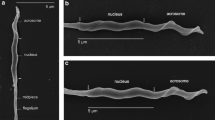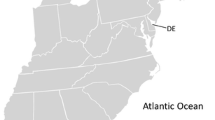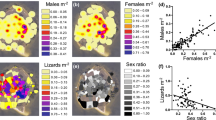Abstract
Spermatozoa vary greatly in size and shape among species across the animal kingdom. Postcopulatory sexual selection is thought to be the major evolutionary force driving this diversity. In contrast, less is known about how sperm size varies among populations of the same species. Here, we investigate geographic variation in sperm size in barn swallows Hirundo rustica, a socially monogamous passerine with a wide Holarctic breeding distribution. We included samples from seven populations and three subspecies: five populations of ssp. rustica in Europe (Czech, Italy, Norway, Spain, and Ukraine), one population of ssp. transitiva in Israel, and one population of ssp. erythrogaster in Canada. All sperm traits (head length, midpiece length, tail length, and total length) varied significantly among populations. The variation among the European rustica populations was much lower than the differences among subspecies, indicating that sperm traits reflect phylogenetic distance. We also performed a test of the relationship between the coefficient of between-male variation in total sperm length and extrapair paternity levels across different populations within a species. Recent studies have found a strong negative relationship between sperm size variation and extrapair paternity among species. Here, we show a similar negative relationship among six barn swallow populations, which suggests that the variance in male sperm length in a population is shaped by the strength of stabilizing postcopulatory sexual selection.


Similar content being viewed by others
References
Baer B, de Jong G, Schmid-Hempel R, Schmid-Hempel P, Høeg JT, Boomsma JJ (2006) Heritability of sperm length in the bumblebee Bombus terrestris. Genetica 127:11–23
Birkhead TR, Pellatt EJ, Brekke P, Yeates R, Castillo-Juarez H (2005) Genetic effects on sperm design in the zebra finch. Nature 434:383–387
Birkhead TR, Hosken DJ, Pitnick S (2009) Sperm biology: an evolutionary perspective. Academic Press, Oxford
Blanckenhorn WU, Hellriegel B (2002) Against Bergmann's rule: fly sperm size increases with temperature. Ecol Lett 5:7–10
Calhim S, Immler S, Birkhead TR (2007) Postcopulatory sexual selection is associated with reduced variation in sperm morphology. PLoS One 2:e413
Cohen J (1977) Reproduction. Butterworths, London
Cramer ERA, Laskemoen T, Kleven O, Lifjeld JT (2012) Sperm length variation in House Wrens Troglodytes aedon. J Ornithol DOI: 10.1007/s10336–012-0878-3
Dor R, Safran RJ, Sheldon FH, Winkler DW, Lovette IJ (2010) Phylogeny of the genus Hirundo and the barn swallow subspecies complex. Mol Phyl Evol 56:409–418
Dor R, Safran RJ, Vortman Y, Lotem A, McGowan A, Evans MR, Lovette IJ (2012) Population genetics and morphological comparisons of migratory European (Hirundo rustica rustica) and sedentary East-Mediterranean (Hirundo rustica transitiva) barn swallows. J Hered 103:55–63
Eberhard WG (1996) Female control: sexual selection by cryptic female choice. Princeton University Press, Princeton, NJ
Elgee KE, Evans JP, Ramnarine IW, Rush SA, Pitcher TE (2010) Geographic variation in sperm traits reflects predation risk and natural rates of multiple paternity in the guppy. J Evol Biol 23:1331–1338
Ellegren H, Lindgren G, Primmer CR, Møller AP (1997) Fitness loss and germline mutations in barn swallows breeding in Chernobyl. Nature 389:593–596
Fitzpatrick JL, Baer B (2011) Polyandry reduces sperm length variation in social insects. Evolution 65:3006–3012
Gage MJG (1998) Mammalian sperm morphometry. Proc R Soc Lond B 265:97–103
Griffith SC, Owens IPF, Thuman KA (2002) Extra pair paternity in birds: a review of interspecific variation and adaptive function. Mol Ecol 11:2195–2212
Hettyey A, Roberts JD (2006) Sperm traits of the quacking frog, Crinia georgiana: intra- and interpopulation variation in a species with a high risk of sperm competition. Behav Ecol Sociobiol 59:389–396
Hosken DJ, Garner TWJ, Blanckenhorn WU (2003) Asymmetry, testis and sperm size in yellow dung flies. Funct Ecol 17:231–236
Immler S, Birkhead TR (2005) A non-invasive method for obtaining spermatozoa from birds. Ibis 147:827–830
Immler S, Calhim S, Birkhead TR (2008) Increased postcopulatory sexual selection reduces the intramale variation in sperm design. Evolution 62:1538–1543
Immler S, Pryke SR, Birkhead TR, Griffith SC (2010) Pronounced within-individual plasticity in sperm morphometry across social environments. Evolution 64:1634–1643
Immler S, Griffith SC, Zann R, Birkhead TR (2012) Intra-specific variance in sperm morphometry: a comparison between wild and domesticated Zebra Finches Taeniopygia guttata. Ibis 154:480–487
Johnsen A, Rindal E, Ericson PGP, Zuccon D, Kerr KCR, Stoeckle MY, Lifjeld JT (2010) DNA barcoding of Scandinavian birds reveals divergent lineages in trans-Atlantic species. J Ornithol 151:565–578
Joly D, Korol A, Nevo E (2004) Sperm size evolution in Drosophila: inter- and intraspecific analysis. Genetica 120:233–244
Kleven O, Jacobsen F, Robertson RJ, Lifjeld JT (2005) Extrapair mating between relatives in the barn swallow: a role for kin selection? Biol Lett 1:389–392
Kleven O, Jacobsen F, Izadnegahdar R, Robertson RJ, Lifjeld JT (2006) Male tail streamer length predicts fertilization success in the North American barn swallow (Hirundo rustica erythrogaster). Behav Ecol Sociobiol 59:412–418
Kleven O, Laskemoen T, Fossøy F, Robertson RJ, Lifjeld JT (2008) Intraspecific variation in sperm length is negatively related to sperm competition in passerine birds. Evolution 62:494–499
Kuramoto M (1996) Generic differentiation of sperm morphology in treefrogs from Japan and Taiwan. J Herpetol 30:437–443
Laskemoen T, Kleven O, Fossøy F, Lifjeld JT (2007) Intraspecific variation in sperm length in two passerine species, the bluethroat Luscinia svecica and the willow warbler Phylloscopus trochilus. Ornis Fenn 84:131–139
Lessells CM, Boag PT (1987) Unrepeatable repeatabilities: a common mistake. Auk 104:116–121
Lifjeld JT, Laskemoen T, Kleven O, Albrecht T, Robertson RJ (2010) Sperm length variation as a predictor of extrapair paternity in passerine birds. PLoS One 5:e13456
Lifjeld JT, Kleven O, Jacobsen F, McGraw KJ, Safran RJ, Robertson RJ (2011) Age before beauty? Relationships between fertilization success and age-dependent ornaments in barn swallows. Behav Ecol Sociobiol 65:1687–1697
Lifjeld JT, Laskemoen T, Kleven O, Pedersen ATM, Lampe HM, Rudolfsen G, Schmoll T, Slagsvold T (2012) No evidence for pre-copulatory sexual selection in a passerine bird. PLoS One 7:e32611
Lüpold S, Linz GM, Birkhead TR (2009) Sperm design and variation in the New World blackbirds (Icteridae). Behav Ecol Sociobiol 63:899–909
Lüpold S, Westneat DF, Birkhead TR (2011) Geographical variation in sperm morphology in the red-winged blackbird (Agelaius phoeniceus). Evol Ecol 25:373–390
Manier MK, Palumbi SR (2008) Intraspecific divergence in sperm morphology of the green sea urchin, Strongylocentrotus droebachiensis: implications for selection in broadcast spawners. BMC Evol Biol 8:283
Minoretti N, Baur B (2006) Among- and within-population variation in sperm quality in the simultaneously hermaphroditic land snail Arianta arbustorum. Behav Ecol Sociobiol 60:270–280
Møller AP (1988) Female choice selects for male sexual tail ornaments in the monogamous swallow. Nature 332:640–642
Møller AP (1994a) Repeatability of female choice in a monogamous swallow. Anim Behav 47:643–648
Møller AP (1994b) Sexual selection and the barn swallow. Oxford University Press, Oxford
Møller AP, Brohede J, Cuervo JJ, de Lope F, Primmer C (2003) Extrapair paternity in relation to sexual ornamentation, arrival date, and condition in a migratory bird. Behav Ecol 14:707–712
Møller AP, Mousseau TA, Lynn C, Ostermiller S, Rudolfsen G (2008) Impaired swimming behaviour and morphology of sperm from barn swallows Hirundo rustica in Chernobyl. Mutat Res Genet Tox Environ Mutagen 650:210–216
Morrow EH, Gage MJG (2001a) Artificial selection and heritability of sperm length in Gryllus bimaculatus. Heredity 87:356–362
Morrow EH, Gage MJG (2001b) Consistent significant variation between individual males in spermatozoal morphometry. J Zool Lond 254:147–153
Paradis E, Baillie SR, Sutherland WJ, Gregory RD (1999) Dispersal and spatial scale affect synchrony in spatial population dynamics. Ecol Lett 2:114–120
Parker GA (1970) Sperm competition and its evolutionary consequences in the insects. Biol Rev 45:525–567
Petrie M, Kempenaers B (1998) Extra-pair paternity in birds: explaining variation between species and populations. Trends Ecol Evol 13:52–58
Pitnick S, Miller GT, Schneider B, Markow TA (2003) Ejaculate-female coevolution in Drosophila mojavensis. Proc R Soc Lond B 270:1507–1512
Safran RJ, Neumann CR, McGraw KJ, Lovette IJ (2005) Dynamic paternity allocation as a function of male plumage color in barn swallows. Science 309:2210–2212
Saino N, Primmer CR, Ellegren H, Møller AP (1997) An experimental study of paternity and tail ornamentation in the barn swallow (Hirundo rustica). Evolution 51:562–570
Saino N, Primmer CR, Ellegren H, Møller AP (1999) Breeding synchrony and paternity in the barn swallow (Hirundo rustica). Behav Ecol Sociobiol 45:211–218
Schmoll T, Kleven O (2011) Sperm dimensions differ between two coal tit Periparus ater populations. J Ornithol 152:515–520
Snook RR (2001) Absence of latitudinal clines in sperm characters in North American populations of Drosophila subobscura (Diptera: Drosophilidae). Pan-Pac Entomol 77:261–271
Sokal RR, Rohlf FJ (1995) Biometry: the principles and practice of statistics in biological research. Freeman, New York
Turner AK (2006) The barn swallow. T. & A. D, Poyser, London
Vortman Y, Lotem A, Dor R, Lovette IJ, Safran RJ (2011) The sexual signals of the East-Mediterranean barn swallow: a different swallow tale. Behav Ecol 22:1344–1352
Ward PI (1998) Intraspecific variation in sperm size characters. Heredity 80:655–659
Ward PI (2000) Sperm length is heritable and sex-linked in the yellow dung fly (Scathophaga stercoraria). J Zool Lond 251:349–353
Wolfson A (1952) The cloacal protuberance: a means for determining breeding condition in live male passerines. Bird Band 23:159–165
Acknowledgments
We are grateful to all people that assisted with field work, especially Frode Fossøy in Canada, Bjørn Aksel Bjerke in Norway, and Luz Garcia-Longoria in Spain. A special thanks to Gustav Thorsø Mohr for allowing us to trap inside the barn at Thorsø Herregård. We thank two anonymous reviewers for helpful comments on an earlier draft of the manuscript. This study was supported by funding from the Czech Science Foundation (to TA, project no. P506/12/2472), a Fondazione Cariplo grant (to NS, grant no. 2009–3496), the Ministry of Culture of the Czech Republic (to JC, grant no. DKRVO 00023272), the Natural Sciences and Engineering Research Council of Canada (to RJR), the Norwegian Research Council (to JTL, OK, LEJ and TL), the Samuel Freeman Charitable Trust (to TAM), and the Spanish Ministry of Economy and Competitivness (to IGH, FdL and AM, grant no. CGL 2012–36665).
Ethical standards
All authors declare that the present study complies with the current laws and ethical standards of animal research in Canada, Czech Republic, Israel, Italy, Norway, Spain, and Ukraine.
Conflict of interest
The authors declare that they have no conflict of interest
Author information
Authors and Affiliations
Corresponding author
Additional information
Communicated by S. Pruett-Jones
Electronic supplementary material
Below is the link to the electronic supplementary material.
Table S1
Overview of subspecies, sample size, sampling localities, and sampling years of barn swallow Hirundo rustica included in the analyses of among population variation in sperm morphometry (DOC 40 kb)
Table S2
Summary of the pairwise comparisons of estimated marginal means of sperm head length variation among populations from the GLMM. Diagonal: mean sperm head length by population. Above the diagonal: difference in sperm head of the focal variable relative to the value in the diagonal. Below the diagonal: probabilities for difference between the populations, Bonferroni-adjusted for multiple comparisons. Significant differences are indicated by bold numbers (DOC 55 kb)
Table S3
Summary of the pairwise comparisons of estimated marginal means of sperm midpiece length variation among populations from the GLMM. Diagonal: mean sperm midpiece length by population. Above the diagonal: difference in sperm midpiece of the focal variable relative to the value in the diagonal. Below the diagonal: probabilities for difference between the populations, Bonferroni-adjusted for multiple comparisons. Significant differences are indicated by bold numbers. (DOC 55 kb)
Table S4
Summary of the pairwise comparisons of estimated marginal means of sperm total length variation among populations from the GLMM. Diagonal: mean sperm total length by population. Above the diagonal: difference in sperm total length of the focal variable relative to the value in the diagonal. Below the diagonal: probabilities for difference between the populations, Bonferroni-adjusted for multiple comparisons. Significant differences are indicated by bold numbers (DOC 55 kb)
Rights and permissions
About this article
Cite this article
Laskemoen, T., Albrecht, T., Bonisoli-Alquati, A. et al. Variation in sperm morphometry and sperm competition among barn swallow (Hirundo rustica) populations. Behav Ecol Sociobiol 67, 301–309 (2013). https://doi.org/10.1007/s00265-012-1450-0
Received:
Revised:
Accepted:
Published:
Issue Date:
DOI: https://doi.org/10.1007/s00265-012-1450-0




